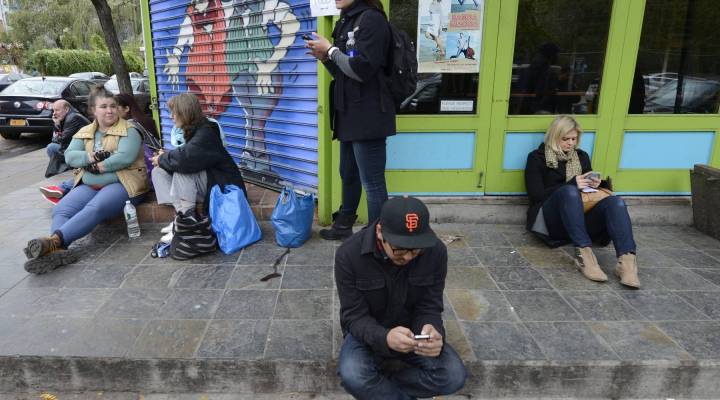
Emergencies? There’s an app for that

We’re using our phones for just about everything now: photos, directions, news updates, entertainment and now, even emergencies. 20 percent of Americans now say they’ve gotten emergency help or information from a cellphone app.
Moments after the Boston bombings, a lot of people turned to their smartphones to let family and friends know they were okay, using apps like Life360. Company CEO Chris Hulls says the response was remarkable.
“It was thousands and thousands of check-ins right after it happened,” he says. “It was pretty interesting to see how people, the first thing they did after it happened and they were fine was pull out the app and check in.”
The Life360 cellphone app, which has 34 million users, lets you see family members’ locations and send text messages and emails to them. The basic app is free, but users can pay for premium service, like 24-hour personal support. Hulls says the emergency app marketplace has gotten crowded, as events like Hurricane Sandy and the Sandy Hook school shooting showed people the need for emergency apps.
“It makes so much sense,” says Hulls. “The fact that we have an always on, Internet and location enabled device in our pockets, it’s kind of just clicked for everybody.” Everybody from USC to The Red Cross is developing emergency apps.
The U.S. market for emergency apps is worth an estimated $1 billion, as schools, businesses and other institutions look to buy them. The Federal Communications Commission requires institutions of higher education to have mass communications systems in place.
Paul Rauner is founder of SirenGPS, an emergency app that’s coming soon. Rauner says his app can save precious minutes in an emergency situation.
“Right now when you call 9-11, you have to tell them who you are and where you are and what’s wrong,” he says. “We’re sending them information with your call and it makes the response that much faster.”
That’s why emergency apps will likely become as common a feature a Google maps on smartphones says Dr. Kevin “Kip” Thomas, Director of the Healthcare Emergency Program at Boston University’s School of Medicine.
“It wouldn’t surprise me if smartphone makers in the future incorporate these as part of a standard package.”
Apple has filed a patent for an emergency app for the iPhone. The next challenge? Preventing cellphone service from crashing during a disaster, like it did during Hurricane Sandy.
Emergency apps are growing in number, here are few that caught our eye. Also take a look at the U.S. Department of Health and Human Services’ full list of disaster apps.
Prepare:
Disaster Readiness: Download this emergency prep guide before disaster hits. If the power goes out, you’ll still have access to over 175,000 sets of instructions that cover flood, fire, evacuation procedure and more. $1.99.
Respond:
First Aid: Created by the American Red Cross, this app has video and written instructions to help you handle everything from minor household injuries to major emergencies. Free.
Stay Informed:
Disaster Alert: Provides listings and maps of real-time natural and man-made disasters around the world. Free.
Hurricane Tracker: Includes video, radar images, alerts and minute-by-minute tracking updates, so that you can follow a storm all in one place. $2.99.
Outbreaks Near Me: Provides real-time, searchable disease outbreak information in your neighborhood. Free.
Get Help:
Red Panic Button: Allows users to send their GPS location to pre-set emergency contacts with just one touch. $2.99.
Shelter View: Created by the American Red Cross, this app maps available shelters and disaster centers in your area. Free.
Update Others:
Life360: Lets you see family members’ locations and send text messages and emails to them. The basic app is free, but users can pay for premium service, like 24-hour personal support.
There’s a lot happening in the world. Through it all, Marketplace is here for you.
You rely on Marketplace to break down the world’s events and tell you how it affects you in a fact-based, approachable way. We rely on your financial support to keep making that possible.
Your donation today powers the independent journalism that you rely on. For just $5/month, you can help sustain Marketplace so we can keep reporting on the things that matter to you.












